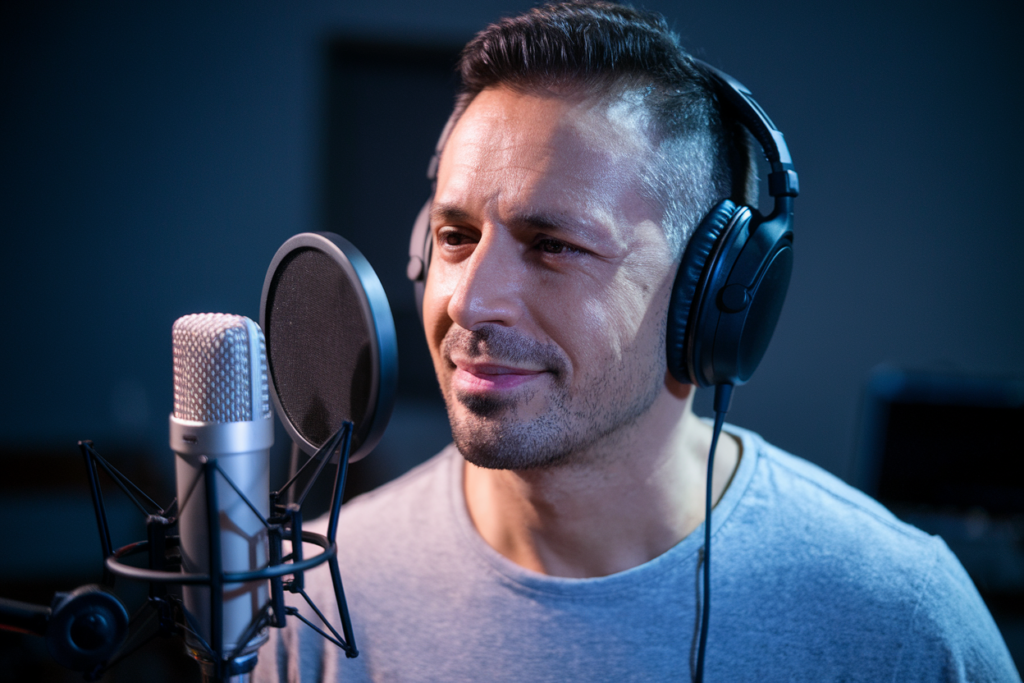Key Takeaways
- Regional Pronunciation Variations: Turkish pronunciation differs significantly across regions, with distinct accents found in cities like Istanbul and rural areas of Anatolia, reflecting local identities and cultural nuances.
- Importance of Accent in Communication: Understanding regional accents enhances clarity and effectiveness in communication, especially for voiceover projects where the right accent can improve audience connection.
- Key Features of Vowels and Consonants: Vowel sounds are crisper in Istanbul’s accent while softer in Anatolian dialects; consonant variations also exist, influencing how messages are conveyed by voice talent.
- Cultural Significance of Dialects: Each region’s pronunciation carries unique cultural connotations that enrich the Turkish language’s diversity, important for voice artists aiming to evoke genuine emotions.
- Factors Influencing Pronunciation: Geographic location, social dynamics, and historical influences shape Turkish pronunciation; being aware of these factors is crucial for effective communication and authentic storytelling.
- Enhancing Voiceover Authenticity: Selecting the appropriate regional accent can significantly impact the authenticity and relatability of voiceover work, making it essential for projects requiring a specific cultural flavor.
Ever wondered why Turkish sounds so different depending on where you are in the country? Regional differences in Turkish pronunciation can be fascinating and sometimes confusing. From the crisp tones of Istanbul to the softer accents of Anatolia, each area has its unique flair that shapes how the language is spoken.
Overview Of Turkish Language
Turkish is a member of the Turkic language family, predominantly spoken in Turkey and Cyprus. It’s characterized by vowel harmony and agglutination, meaning suffixes attach to root words to create new meanings. For instance, a single word can convey complex ideas through various endings.
Phonetically, Turkish features a rich array of sounds that contribute to its melodic quality. The language includes 29 letters in its alphabet, many of which represent distinct sounds not found in English. This leads to variations in pronunciation based on regional accents.
In cities like Istanbul, you might hear clear and precise enunciation. In contrast, rural areas may display softer tones or slight dialectical shifts. These differences enrich the linguistic landscape of Turkey and reflect cultural diversity.
Understanding these nuances enhances communication effectiveness whether you’re engaging with native speakers or exploring voiceover opportunities involving the Turkish language. Being aware of regional accents can make a significant difference when selecting voice talent for projects requiring authenticity and local flavor.
Turkish pronunciation varies significantly across regions—knowing this helps ensure your voice over artist captures the correct tone for your audience. Whether you need a crisp Istanbul accent or a gentle Anatolian sound, understanding these distinctions will guide your choice effectively.
Importance Of Pronunciation
Pronunciation plays a vital role in effective communication, especially when it comes to languages like Turkish. Understanding regional accents and pronunciation nuances enhances clarity and ensures messages resonate with listeners.
Impact On Communication
Pronunciation directly influences how well you convey ideas. Mispronouncing key words can lead to misunderstandings, especially for those unfamiliar with the language’s subtleties. In voiceover projects, selecting the right accent—whether it’s the sharp tones of Istanbul or the softer rhythms of Anatolia—can significantly impact audience perception. A clear accent not only makes your content more accessible but also increases its authenticity, making it crucial for voice artists aiming to connect deeply with their audience.
Cultural Significance
Every region in Turkey carries unique cultural connotations tied to its pronunciation style. These differences reflect local identities and histories, enriching the Turkish language’s diversity. For voice actors engaged in projects that require cultural sensitivity, recognizing these distinctions helps evoke genuine emotions and responses from listeners. When a voiceover artist captures an accent accurately, they honor that culture while enhancing the storytelling aspect of their work. This attention to detail leads to a more immersive experience for audiences who appreciate authenticity in every word spoken.
Regional Dialects Of Turkish
Turkish pronunciation varies significantly across regions, reflecting local identities and cultural nuances. Understanding these regional dialects enhances communication, especially for voiceovers where accent authenticity matters.
Northern Turkish Dialects
Northern Turkish dialects often feature sharp consonants and distinctive intonations. The Black Sea region is known for its unique phonetic characteristics. For instance, the „r” sound may be rolled more prominently compared to other areas. This crisp enunciation can create a lively effect in voiceover work, capturing the energetic spirit of northern communities.
Southern Turkish Dialects
Southern Turkish dialects exhibit softer pronunciations with an emphasis on fluidity. In places like Antalya or Mersin, vowels tend to blend smoothly into one another, creating a melodic quality that resonates well in voiceover projects. A gentle tone might evoke warmth and friendliness—perfect for storytelling or character-driven narratives.
Eastern Turkish Dialects
Eastern Turkish dialects showcase diverse influences from various ethnic groups, resulting in unique sounds and expressions. For example, accents in cities like Van or Erzurum may incorporate elements from Kurdish languages. These rich vocal textures add depth to voiceovers aimed at engaging audiences who appreciate cultural variety and authenticity.
Western Turkish Dialects
Western Turkish dialects are often characterized by their clarity and precision. Izmir’s accent is widely understood across Turkey and serves as a reference point for many learners of the language. This clarity makes it ideal for voice actors aiming to deliver messages effectively without regional misunderstandings—critical in commercial voiceovers that require clear articulation.
Understanding these regional differences not only enriches your appreciation of the language but also informs your choice of voice talent when selecting someone whose accent aligns with your project’s vision.
Key Features Of Regional Differences
Regional differences in Turkish pronunciation reveal fascinating nuances that enrich the language’s character. Understanding these features can enhance communication, especially for voice actors aiming to connect authentically with their audience.
Vowel Pronunciation
Vowel pronunciation varies significantly across regions in Turkey. In Istanbul, vowels sound crisp and clear, creating a sharp auditory experience. Meanwhile, Anatolian accents soften these sounds, blending them more fluidly. For instance, the vowel „a” may be pronounced more openly in Eastern dialects compared to its tighter articulation in Western dialects. This distinction plays a crucial role for voice talent who want to evoke specific emotions or cultural contexts through their delivery.
Consonant Variations
Consonants also display notable variations among regional accents. Northern Turkish dialects often feature sharper consonants; the „r” sound rolls prominently in areas like the Black Sea region. Conversely, Southern dialects present softer consonantal sounds that lend a warm familiarity to speech patterns. These variations not only add texture but also influence how effectively a message is conveyed by voice artists familiar with these subtleties.
Intonation Patterns
Intonation patterns differ from one region to another as well. In Istanbul’s accent, intonations tend to rise and fall sharply, making speech dynamic and engaging. On the other hand, Antalya’s intonation flows gently and smoothly—ideal for storytelling or emotional narratives. Voice over talent must master these patterns to deliver performances that resonate accurately with local audiences while maintaining authenticity.
Understanding these key features of regional differences enhances your ability as a voice actor or artist to select an appropriate accent for any project you undertake. Being aware of how vowels, consonants, and intonations shape meaning supports clear communication and enriches listener engagement across various contexts.
Factors Influencing Pronunciation
Understanding the factors that influence Turkish pronunciation helps you appreciate the rich diversity of the language. Geographic, social, and historical elements shape how people speak across different regions.
Geographic Factors
Geography plays a crucial role in pronunciation variations. Turkey’s diverse landscapes create distinct regional identities, influencing how sounds are articulated. For instance, coastal areas like Antalya showcase softer pronunciations due to their Mediterranean climate and cultural influences. In contrast, Northern regions such as the Black Sea emphasize sharp consonants and strong intonations. These geographic differences can affect voice actors’ choices when selecting accents for projects aimed at specific audiences.
Social Factors
Social dynamics also impact pronunciation styles in Turkey. Urban centers like Istanbul often lead trends in language use, adopting clearer and more standardized forms of speech. Conversely, rural areas maintain traditional dialects that reflect local cultures and practices. Understanding these social nuances is essential for voice artists aiming to connect authentically with listeners; an accurate portrayal of a regional accent enhances relatability and engagement.
Historical Influences
Historical contexts contribute significantly to pronunciation differences as well. Over centuries, migrations and interactions among various ethnic groups have shaped local dialects. For example, Eastern Turkish dialects incorporate unique phonetic traits influenced by Kurdish and Arabic speakers, resulting in distinct vocal textures. Voice over talent should recognize these historical layers when developing character voices or narratives tied to specific regions; it adds depth to storytelling while respecting cultural authenticity.
By considering geographic variations, social dynamics, and historical contexts in your work as a voice actor or artist, you enhance your ability to convey messages effectively while honoring the intricate tapestry of Turkish language and culture.
Conclusion
Understanding regional differences in Turkish pronunciation enriches your appreciation of the language and its culture. Each accent carries unique sounds and rhythms that reflect local identities and histories. Whether you’re a voice actor or simply someone interested in mastering Turkish, recognizing these nuances will elevate your communication skills.
Embracing the variety from crisp Istanbul tones to softer Anatolian accents allows for deeper connections with native speakers. This knowledge not only enhances clarity but also adds authenticity to your interactions. As you delve into the rich phonetic landscape of Turkish, you’ll find that every pronunciation tells a story waiting to be shared.
Frequently Asked Questions
What are the main regional accents in Turkish pronunciation?
Turkish pronunciation varies across regions, with notable accents including the crisp tones of Istanbul, softer sounds from Anatolia, sharp consonants in Northern dialects (like the Black Sea), and fluid pronunciations in Southern areas such as Antalya. Each accent reflects local identities and cultural nuances.
Why is understanding Turkish pronunciation important for voiceover projects?
Understanding Turkish pronunciation is crucial for voiceover work because selecting the right accent enhances authenticity and connects better with audiences. Accurate representation of regional accents can significantly impact storytelling by conveying cultural context and emotional depth.
How does vowel harmony affect Turkish pronunciation?
Vowel harmony is a key feature of Turkish that influences how vowels are pronounced within words. It ensures that vowels within a word harmonize in terms of frontness or backness, contributing to the language’s melodic quality and affecting regional variations in sound.
What role do geographic factors play in Turkish dialects?
Geographic factors create distinct regional identities that influence how sounds are articulated. For example, coastal areas like Antalya tend to have softer pronunciations, while Northern regions emphasize sharper consonants due to their diverse landscapes and cultural histories.
How do social dynamics impact Turkish language use?
Social dynamics shape language trends, especially between urban centers like Istanbul—where clearer speech often prevails—and rural areas that maintain traditional dialects. These differences reflect broader societal changes and attitudes toward language usage across Turkey.
What historical influences shape Turkish dialects today?
Historical influences on Turkish dialects stem from migrations and interactions among various ethnic groups over time. This has led to unique phonetic traits being incorporated into local dialects, particularly noticeable in Eastern Turkish where Kurdish and Arabic elements are present.
Are there specific features differentiating regional intonations in Turkey?
Yes, different regions exhibit unique intonation patterns: Istanbul’s accent showcases dynamic rises and falls; Antalya’s flows gently; while other regions may have more stable or varied intonational styles. These patterns further enrich the linguistic landscape of Turkey.
How can voice actors enhance their skills regarding these accents?
Voice actors can enhance their skills by studying specific characteristics of each regional accent through practice, training, and exposure to native speakers. Understanding phonetic nuances allows them to accurately capture the essence of each accent for authentic performances.







